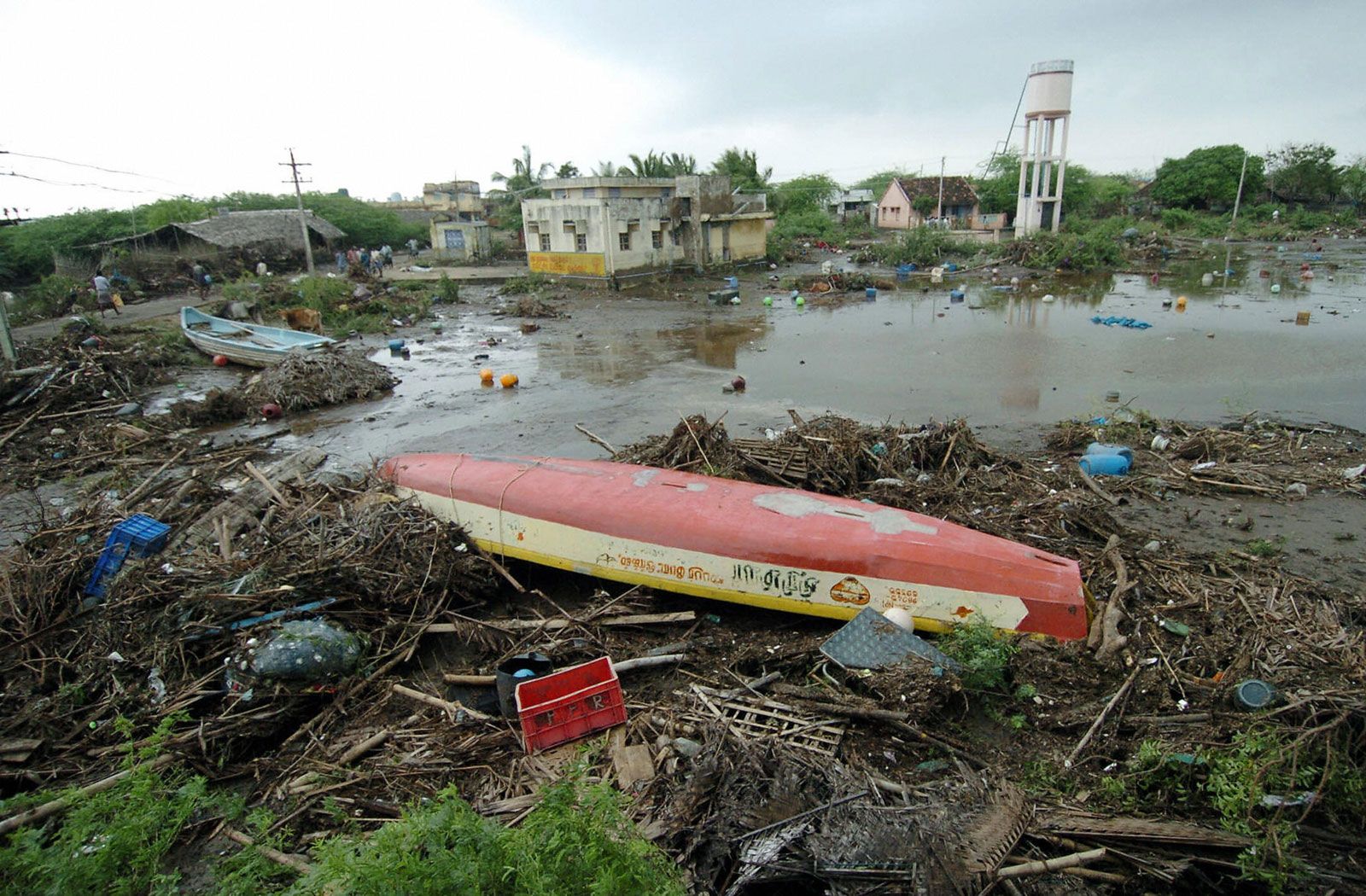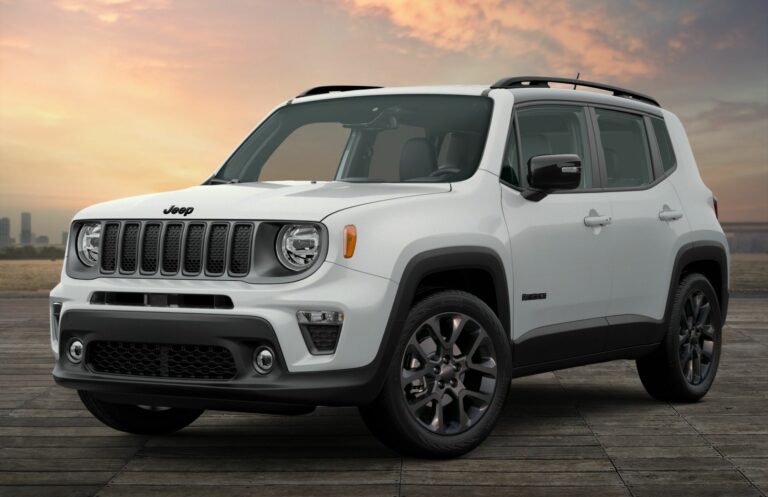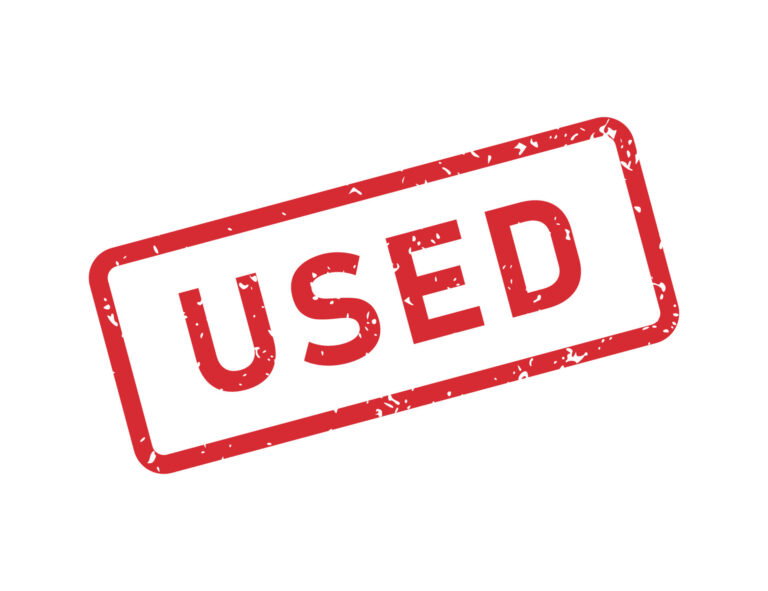2004-2010 Jeep Grand Cherokee For Sale: Your Comprehensive Buying Guide
2004-2010 Jeep Grand Cherokee For Sale: Your Comprehensive Buying Guide jeeps.truckstrend.com
For over two decades, the Jeep Grand Cherokee has stood as an icon of American SUV manufacturing, blending rugged off-road capability with surprising levels of comfort and refinement. The 2004-2010 model years, encompassing the tail end of the venerable WJ generation and the entirety of the popular WK generation, represent a sweet spot in the used SUV market. These vehicles offer a compelling combination of affordability, genuine utility, and the unmistakable Jeep spirit, making them highly sought after by those seeking a versatile daily driver, a capable off-road companion, or a reliable family hauler.
This comprehensive guide will delve into everything you need to know about purchasing a 2004-2010 Jeep Grand Cherokee. Whether you’re a first-time Jeep owner or a seasoned enthusiast, understanding the nuances of these generations is crucial to making an informed decision and finding the perfect Grand Cherokee for your needs.
2004-2010 Jeep Grand Cherokee For Sale: Your Comprehensive Buying Guide
Understanding the 2004-2010 Grand Cherokee Generations
The 2004-2010 span covers two distinct iterations of the Grand Cherokee, each with its unique characteristics and appeal. Knowing the differences is key to identifying which model best suits your priorities.
The 2004 Grand Cherokee (WJ Generation)
The 2004 model year marks the final production run of the WJ generation (1999-2004). Revered by many Jeep enthusiasts for its solid axles and robust off-road performance, the WJ offers a more traditional SUV feel.
- Engine Options: Primarily the reliable 4.0L PowerTech I6 engine, known for its longevity, and the more powerful 4.7L PowerTech V8, including the High Output (HO) version.
- 4×4 Systems: Featured the Quadra-Trac II (full-time 4WD with low range) and the highly capable Quadra-Drive (adds front and rear vari-lok limited-slip differentials for superior traction).
- Design: A more rounded, classic Jeep aesthetic with a durable interior.
- Pros: Excellent off-road capability, strong aftermarket support, simple mechanics for the 4.0L.
- Cons: Less refined on-road ride compared to the WK, older interior tech, potential for rust on older models.

The 2005-2010 Grand Cherokee (WK Generation)
The WK generation (2005-2010) represented a significant departure and modernization for the Grand Cherokee. Built on a new platform shared with the Mercedes-Benz M-Class, it introduced independent front suspension, improving on-road handling and comfort significantly.
- Engine Options:
- 3.7L PowerTech V6: Standard on Laredo models, adequate but often considered underpowered.
- 4.7L PowerTech V8: Carried over from the WJ, a good balance of power and efficiency.
- 5.7L HEMI V8: The popular choice for power, featuring Multi-Displacement System (MDS) for improved fuel economy (deactivates cylinders under light load).
- 6.1L SRT8 HEMI V8: Introduced in 2006, a high-performance variant with track-focused suspension and immense power.
- 3.0L CRD Diesel (2007-2008): A Mercedes-Benz sourced V6 diesel, offering excellent torque and fuel economy, though less common.

- 4×4 Systems:
- Quadra-Trac I: Full-time 4WD, no low range.
- Quadra-Trac II: Full-time 4WD with low range.
- Quadra-Drive II: Quadra-Trac II plus Electronic Limited Slip Differentials (ELSDs) for superior traction control.
- Design: More angular, modern exterior with a more refined interior, featuring updated technology and materials.
- Pros: Improved on-road ride, powerful HEMI options, advanced 4×4 systems, modern features.
- Cons: More complex electronics, independent front suspension less robust for extreme off-roading than solid axles, potential issues with TIPM (Totally Integrated Power Module) and MDS on HEMI engines.
Why Choose a 2004-2010 Grand Cherokee Today?
Despite their age, these Grand Cherokees continue to be a fantastic value proposition in the used car market for several compelling reasons:
- Affordability: They offer significant bang for your buck, providing a capable, comfortable, and often feature-rich SUV at a fraction of the cost of a new vehicle.
- Genuine Capability: With robust 4×4 systems (especially Quadra-Drive/II), respectable ground clearance, and powerful engine options, these Jeeps are true SUVs, capable of tackling challenging weather, light to moderate off-road trails, and towing duties.
- Engine Variety: From the economical (for an SUV) 3.7L V6 to the thunderous 6.1L SRT8, there’s an engine to match almost any need or desire. The HEMI V8s provide excellent acceleration and towing power.
- Comfort & Features: Depending on the trim level (Laredo, Limited, Overland, SRT8), you can find models equipped with leather seats, heated seats, navigation, premium audio systems, and sunroofs, offering a comfortable driving experience for their era.
- Parts Availability & Aftermarket Support: Due to their popularity, parts are readily available and often affordable. The aftermarket community is also vast, offering endless options for customization, upgrades, and repair guidance.
Key Considerations Before Buying
Before you commit to a purchase, be aware of common issues and areas to inspect thoroughly. Due diligence here can save you significant headaches and expenses down the road.
- Rust: This is a common enemy, especially in regions with road salt. Check rocker panels, frame rails, wheel wells, and around the gas tank skid plate. For WJs, inspect the unibody carefully.
- Maintenance History: A well-documented service history is invaluable. Look for consistent oil changes, transmission fluid services, and records of major repairs. Neglected maintenance is a red flag.
- Engine-Specific Concerns:
- 4.0L I6 (2004 WJ): Generally bulletproof, but look for oil leaks (especially rear main seal) and coolant leaks (radiator, water pump).
- 4.7L V8 (WJ & WK): Reliable, but can suffer from oil sludge if not maintained. Listen for ticking noises, which could indicate valve train issues or exhaust manifold leaks.
- 5.7L HEMI V8 (WK): Prone to lifter failure, especially if oil changes are neglected or the Multi-Displacement System (MDS) has issues. Listen for persistent ticking or knocking. Spark plug changes are also expensive due to 16 plugs.
- 3.0L CRD Diesel (2007-2008 WK): Excellent torque but can have specific diesel issues like DPF (Diesel Particulate Filter) clogs, EGR valve issues, and injector problems. Ensure proper diesel fuel and DEF (if applicable) use.
- 6.1L SRT8 (WK): Performance-oriented, so check for signs of hard driving, proper cooling system maintenance, and regular fluid changes. These demand specific, often more expensive, maintenance.
- Transmission: The 5-speed automatic transmission (often a Mercedes-Benz derived unit, W5A580/NAG1 in WK) is generally robust. Check for harsh shifts, delayed engagement, or slipping. Ensure fluid has been changed.
- 4×4 System: Test the low range and ensure all 4×4 modes engage smoothly without grinding or warning lights. Check for leaks around the transfer case and differentials.
- Suspension Components: Bushings, ball joints, control arms, and tie rods are wear items. Listen for clunks or creaks over bumps. The WK’s independent front suspension requires more attention to these components than the WJ’s solid axle.
- Electrical Gremlins (WK Specific): The Totally Integrated Power Module (TIPM) can be a source of various electrical issues, from intermittent power windows to fuel pump problems. Check that all electronics (windows, locks, radio, HVAC, lights) function correctly.
- Interior Wear: Check for worn seats, cracked plastics, sagging headliners, and non-functioning accessories.
What to Look For During Inspection (Buyer’s Guide)
A thorough inspection is paramount. If you’re not mechanically inclined, invest in a Pre-Purchase Inspection (PPI) by a trusted independent mechanic.
-
Exterior:
- Rust: As mentioned, inspect rocker panels, wheel arches, frame, and underbody.
- Body Panels: Look for inconsistencies in paint, panel gaps, or overspray, which could indicate prior accident damage.
- Tires: Check tread depth and even wear. Uneven wear can signal alignment issues or suspension problems.
- Lights: Ensure all exterior lights (headlights, tail lights, turn signals, brake lights) work.
-
Interior:
- Electronics: Test every button, switch, and screen. Check power windows, locks, mirrors, sunroof, radio, and navigation.
- HVAC: Verify that the air conditioning blows cold and the heater blows hot. Check fan speeds and mode selection.
- Seats: Inspect for rips, tears, excessive wear, and functionality of power adjustments and heating.
- Warning Lights: Ensure no check engine light, ABS light, airbag light, or other critical warnings are illuminated when the engine is running. A seller who claims they just reset the light is suspicious.
-
Under the Hood:
- Fluids: Check oil, transmission fluid, power steering fluid, and coolant levels and condition. Look for milky oil (head gasket), low coolant, or dark, burnt-smelling transmission fluid.
- Leaks: Look for any signs of oil, coolant, or power steering fluid leaks around the engine, transmission, and hoses.
- Belts and Hoses: Check for cracks, fraying, or excessive wear.
- Battery: Look for corrosion on terminals.
- Listen: Start the engine cold. Listen for abnormal noises like ticking, knocking, squealing, or grinding.
-
Underneath the Vehicle:
- Frame: Inspect for any significant rust, bends, or cracks.
- Exhaust System: Check for rust, holes, or loose components.
- Drivetrain: Look for leaks from the engine, transmission, transfer case, and differentials. Check drive shafts for excessive play or worn U-joints.
- Suspension: Visually inspect shocks/struts for leaks, and bushings/ball joints for cracks or excessive play.
-
Test Drive:
- Engine Performance: Accelerate smoothly and then firmly. Does it feel responsive? Is there any hesitation or misfiring?
- Transmission: Note how it shifts. Are shifts smooth and timely, or are they harsh, delayed, or do they slip?
- Steering: Does the steering feel tight and responsive, or is there excessive play? Does the vehicle track straight, or does it pull to one side? Listen for clunks or groans when turning.
- Brakes: Apply brakes firmly. Do they feel strong, or is there pulsation, grinding, or pulling?
- Suspension: Drive over bumps and uneven surfaces. Listen for any clunks, squeaks, or rattles.
- 4×4 System: If possible and safe, test the 4×4 system, engaging low range and driving slowly to ensure it works correctly.
Ownership and Maintenance Tips
Once you’ve purchased your 2004-2010 Grand Cherokee, consistent maintenance is key to its longevity and reliability.
- Regular Fluid Changes: Adhere to or even exceed the manufacturer’s recommendations for oil, transmission fluid, differential fluid, and transfer case fluid changes. This is especially critical for the HEMI and diesel engines.
- Preventative Maintenance: Address small issues promptly. A minor leak can become a major problem if ignored. Replace wear items like belts, hoses, and spark plugs as per schedule.
- Rust Prevention: Regularly wash the undercarriage, especially if you live in an area that uses road salt. Consider applying rustproofing treatments.
- Common DIY Fixes: Many common issues, such as replacing ball joints, tie rods, or certain sensors, can be done by a reasonably handy individual with the right tools and online resources.
- Join Forums/Groups: Online communities like JeepForum.com or GrandCherokeeWK.com are invaluable resources for troubleshooting, modification ideas, and connecting with other owners.
Price Guide for 2004-2010 Jeep Grand Cherokee For Sale
The price of a used 2004-2010 Jeep Grand Cherokee can vary significantly based on year, mileage, trim level, engine, 4×4 system, overall condition, and geographical location. The table below provides a general estimate.
| Model Year | Generation | Trim Level (Common) | Engine Options (Common) | Estimated Price Range (USD) | Notes |
|---|---|---|---|---|---|
| 2004 | WJ | Laredo, Limited, Overland | 4.0L I6, 4.7L V8 (HO) | $3,000 – $7,000 | Highly dependent on condition & mileage. Overland/HO V8s fetch more. |
| 2005 | WK | Laredo, Limited | 3.7L V6, 4.7L V8, 5.7L HEMI | $4,000 – $8,000 | Early WK models. |
| 2006 | WK | Laredo, Limited, Overland, SRT8 | 3.7L V6, 4.7L V8, 5.7L HEMI, 6.1L SRT8 | $4,500 – $12,000+ | SRT8 models significantly higher. Overland/HEMI are premium. |
| 2007 | WK | Laredo, Limited, Overland, SRT8 | 3.7L V6, 4.7L V8, 5.7L HEMI, 3.0L CRD, 6.1L SRT8 | $5,000 – $14,000+ | CRD models can vary; good condition ones hold value. |
| 2008 | WK | Laredo, Limited, Overland, SRT8 | 3.7L V6, 4.7L V8, 5.7L HEMI, 3.0L CRD, 6.1L SRT8 | $5,500 – $15,000+ | Final year for CRD. |
| 2009 | WK | Laredo, Limited, Overland, SRT8 | 3.7L V6, 4.7L V8, 5.7L HEMI, 6.1L SRT8 | $6,000 – $16,000+ | Later WK models often have better features. |
| 2010 | WK | Laredo, Limited, Overland, SRT8 | 3.7L V6, 4.7L V8, 5.7L HEMI, 6.1L SRT8 | $6,500 – $18,000+ | Final model year for WK; generally commands higher prices. |
Note: Prices are estimates and can fluctuate based on market conditions, vehicle history, modifications, and regional demand. Lower prices typically reflect higher mileage or poorer condition, while higher prices indicate low mileage, excellent condition, or premium trims like the SRT8.
Conclusion
The 2004-2010 Jeep Grand Cherokee, whether you opt for the rugged WJ or the more refined WK, offers a compelling package for anyone in the market for a used SUV. They provide a unique blend of American character, true off-road capability, and surprising comfort at an attractive price point. By understanding the specific characteristics of each generation, knowing what to look for during inspection, and committing to diligent maintenance, you can confidently navigate the used market and find a Grand Cherokee that will serve you faithfully for years to come. Do your homework, perform a thorough inspection, and you’ll be well on your way to owning a piece of iconic automotive history.
Frequently Asked Questions (FAQ)
Q: Is the 2004-2010 Grand Cherokee reliable?
A: With proper maintenance, both the WJ and WK generations can be reliable. The 4.0L I6 in the 2004 WJ is particularly known for its longevity. The WK models are more complex, and while generally robust, specific issues like TIPM failures or HEMI lifter problems can arise if not addressed. Pre-purchase inspection and service history are crucial.
Q: Which engine is best for the WK Grand Cherokee?
A: It depends on your needs.
- 3.7L V6: Most fuel-efficient, but often considered underpowered. Good for city driving.
- 4.7L V8: A good balance of power and (relative) efficiency, reliable.
- 5.7L HEMI V8: Best for power, towing, and acceleration. Check for MDS-related issues.
- 3.0L CRD Diesel: Excellent torque and fuel economy, but less common and has specific diesel maintenance considerations.
- 6.1L SRT8 HEMI: Pure performance, not for the faint of heart or budget-conscious.
Q: What is the "death wobble" and is it an issue for these models?
A: The "death wobble" is a violent, uncontrolled shaking of the front end, primarily associated with solid front axle Jeeps (like the WJ Grand Cherokee, or Wranglers) due to worn suspension components (e.g., track bar, tie rod ends, ball joints). While less common on the WK due to its independent front suspension, worn components can still lead to steering looseness or vibrations. It’s a symptom of worn parts, not an inherent flaw in the design itself, and is usually fixable.
Q: Can a 2004-2010 Grand Cherokee really go off-road?
A: Absolutely! Especially models equipped with Quadra-Trac II or Quadra-Drive/II, these Jeeps are highly capable off-road vehicles. The WJ, with its solid front axle, is often preferred for more extreme rock crawling, while the WK, with its independent front suspension, offers a better balance of on-road comfort and off-road capability for light to moderate trails.
Q: What are the most common issues to watch out for?
A: Beyond general wear and tear, common issues include rust (especially on older WJs), electrical gremlins (WK’s TIPM), suspension component wear (ball joints, bushings), oil leaks (WJ 4.0L rear main, WK HEMI lifter covers), and potential issues with the HEMI’s MDS system.
Q: Is it good for towing?
A: Yes, particularly models equipped with the 4.7L V8, 5.7L HEMI V8, or 3.0L CRD diesel engine. Depending on the specific engine and drivetrain, towing capacities can range from around 3,500 lbs (V6) up to 7,200 lbs (HEMI). Always check the specific vehicle’s owner’s manual or door jamb sticker for exact towing capacities and ensure it has a proper tow package.






